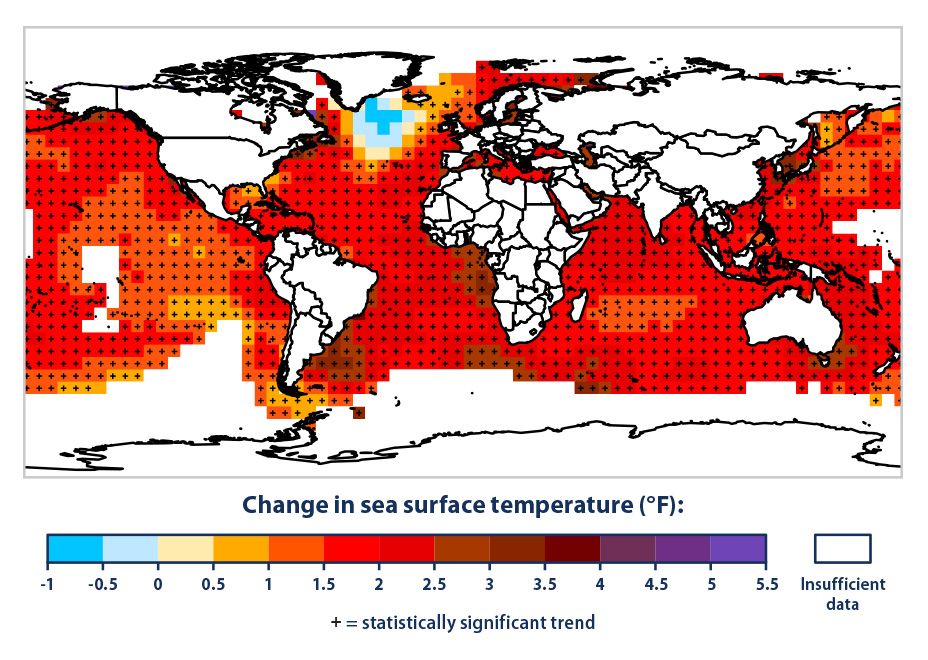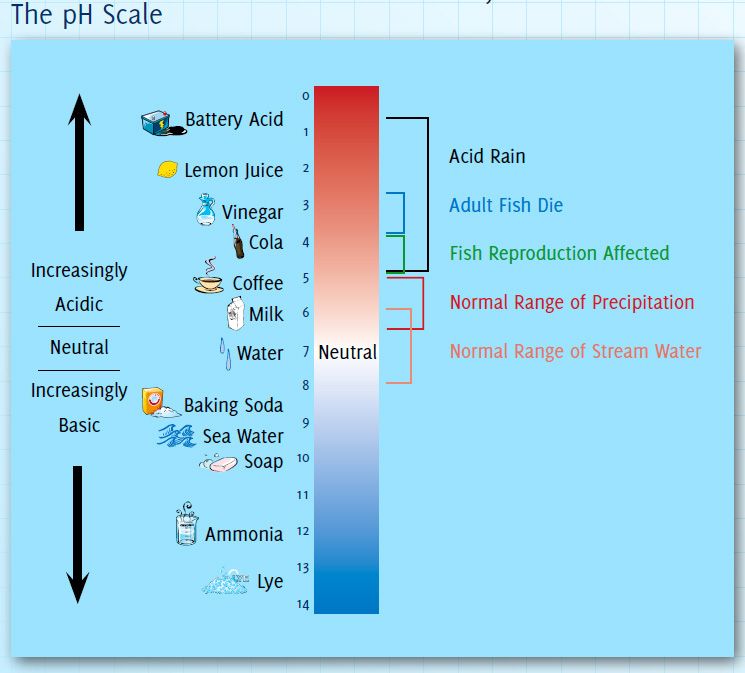Rising Ocean Temperatures and Climate Change
Ocean temperatures have been rising due to global warming (climate change). Life on land is closely connected to the oceans, and rapid changes to ocean chemistry, ecosystems, and natural patterns is a big deal. Higher ocean temperatures cause melted glaciers, bleached coral reefs, and worsened hurricanes. Increasing ocean temperatures will have strongly negative consequences for our economies and quality of life.
Rising ocean temperatures are measured on the sea surface by ships and drifting sensors, by satellites from above, and subsurface measurements in the ocean depths. Many agencies and non-profit groups have contributed to the effort of tracking ocean temperatures accurately. Their predictions for the future of our ocean temperatures vary, but all three leading organizations tracking ocean temperatures indicate severe warming in our future:

Source: https://www.epa.gov/sites/default/files/2021-04/ocean-heat_figure1_2021.png
- National Oceanic and Atmospheric Administration (NOAA)
- Australia’s Commonwealth Scientific and Industrial Research Organization (CSIRO)
- Japan Meteorological Agency’s Meteorological Research Institute (MRI/MA)
Oceans remove large quantities of carbon dioxide from the atmosphere through natural processes. Oceans are currently the largest carbon sink on earth, outpacing forests, animals and soil. Massive populations of plankton use CO2 for photosynthesis to produce food. When plankton die, their remains sink to the ocean floor, storing that carbon deep within the ocean instead of out in the atmosphere. But the total amount of plankton sinking into the deep ocean is decreasing due to warming ocean temperatures. This puts a crucial means of slowing down the impact of climate change in grave danger.
Water has a high heat capacity, which means that the ocean has risen in temperature more slowly than the earth’s atmosphere. This has caused ocean temperatures to rise slowly, but even small differences can cause significant and dangerous shifts in ocean health and stability. Rising amounts of atmospheric greenhouse gasses have caused many physical changes to our oceans. At least three major changes have happened to oceans due to global warming:
1. Rising Ocean Temperatures
The ocean covers over two-thirds of the earth’s surface. Rising temperatures have widespread impacts, especially for marine life. Plant and animal systems that have built up over millions of years are experiencing quick and destabilizing changes to their environments due to excess heat.

Source: https://www.epa.gov/climate-indicators/climate-change-indicators-sea-surface-temperature
- Ocean Deoxygenation: The oxygen content of the ocean has declined about 2 percent overall since the middle of the 20th century. Warmer ocean water holds less oxygen and has more buoyancy than cooler water. Increased buoyancy leads to less mixing of oxygenated water near the ocean surface with deeper ocean waters. This results in a decline in biodiversity, the spread of harmful algal blooms, and the disruption of the fishing industry. Ocean “dead zones” result in areas that have too little oxygen to support life.
- Coral Bleaching: Heat stress causes bleaching of coral reefs. Coral bleaching is the expulsion of the beneficial algae on the surface of corals which produces their food, robbing them of their bright colors and leaving unhealthy white coral behind. Corals are a crucial part of many marine ecosystems; they protect coastlines from storms and erosion, boost tourism economies, and provide habitat for thousands of fish species.
- Species migration: Rising temperatures have caused unusual species migration patterns. More than 80 percent of marine life on earth is migrating and changing breeding and feeding patterns due to warming ocean waters. The pace of change in the ocean ecosystems is alarming; ocean species are migrating 10 times faster than land species, as many as 600 miles from their former locations just decades previously.
2. Loss of Sea Ice & Sea Level Rise
The melting of significant reserves of polar ice will further increase the problems of warmer ocean waters and sea level rise. The white surface of sea ice reflects sunlight back into the atmosphere which would otherwise be absorbed into the ocean and heat it up. Melting ice leads to the erosion of the arctic coastline, the disturbance of global weather patterns, accelerated movement of glaciers previously held back by ice shelves, and a loss of habitat for arctic species.
On top of the added water from melting ice caps, water expands in volume when it warms. At least one-third of the measured increase in ocean waters globally is due to this phenomenon of warming waters causing thermal expansion. Coastal flooding is an extremely dangerous and costly result of warming ocean temperatures.
3. Ocean Acidity
Acidity is a potent threat to our oceans, but why? On the pH scale from basic (1) to acidic (14), 7 is neutral. In its purest form, water has a pH of 7, the exact center of the pH scale. But when it absorbs gasses and other solutes, water’s pH can vary between 6.5 and 8.5.
When pH decreases, acidity rises. The pH of the ocean has been declining as a result of climate change, causing ocean acidification. The ocean absorbs approximately 25 to 30 percent of the carbon dioxide that is released into the atmosphere. As human activity increases the production of greenhouse gasses, the amount that is absorbed by the oceans also increases.

Since the industrial revolution, the pH of water has fallen 0.1 pH on average, representing a 30% increase in acidity. This change over the last 200 years is happening faster than any pH changes over the last 50 million years. Marine life and environments that have evolved over millions of years are now facing a drastic change in ocean chemistry that they are not equipped for. The complex food webs that marine animals depend on could be devastated by these changes, especially primary consumers like pteropod sea snails, sea urchins, and brittle stars which are already showing deformities and population declines. Some of the problems facing these creatures include:
- Calcifying Organisms: Acidification is problematic for hard shell and skeleton organisms like oysters and corals. It leaves less carbonate ions for building shells and other calcium carbonate structures. An especially low pH can even dissolve the shells and skeletons of organisms.
- Non-calcifying Organisms: Fish and seaweeds are impacted too, beyond the disruption of their food chains. For example, the ability of some fish to detect predators is decreased in acidified waters.
Some positive impacts of ocean warming are possible. Warmer oceans mean better tourism in some locations and easier shipping and transport for areas that used to be covered with glaciers and floating ice. But the few positives have been drowned out by other negative economic impacts, including a disruption in fisheries and cultural ways of living.
Conclusion
Our oceans have been hit hard by rising temperatures caused by greenhouse gasses and other human produced pollutants. Ocean temperatures change slowly, which has so far helped limit the worst dangers to our ocean ecosystems. But this also means that, even if carbon emissions were stabilized this year, it would take centuries for the oceans to adjust to the changes that have already occurred. Both sea and land are important in the fight against climate change; they are interrelated systems that cannot be easily separated and should not be ignored.